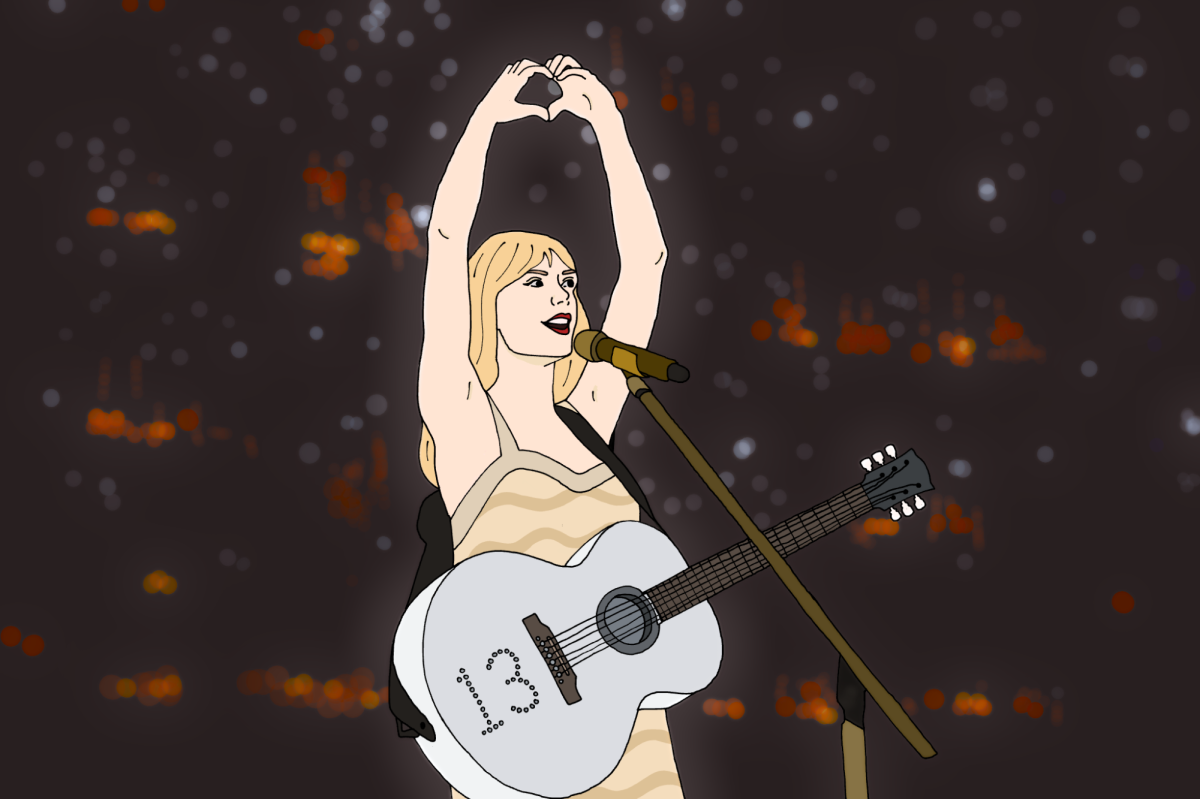After 51 cities, three albums, one concert film and countless “Love Story” proposals, Taylor Swift’s “The Eras Tour” came to an end on Dec. 8, 2024. Although Swift has taken the tour’s final bow, the cultural impact of the show will live on.
While music fans differ in their opinions about Swift’s artistic talent, the recent impact she has had on pop culture is undeniable. “The Eras Tour” is one of the single most impressive – and lucrative – productions in history.
“The Eras Tour” has become a cultural icon in its own right. Videos of in-concert proposals, surprise songs, improvised dance breaks and original costumes have all gone viral within and outside of the Swiftie community. Not to mention, multiple cities were temporarily renamed to honor Swift’s performances. Few artists could boast such pervasive entrance into the cultural zeitgeist.
Tour performances have not only boosted Swift’s own fame but also that of her opening acts. Sabrina Carpenter, Gracie Abrams and the tour’s other openers have seen rapid growth since their appearances on “The Eras Tour” stage. Five of the performers have been nominated for Best New Artist at the Grammys since performing for Swift. Clearly, the tour has ushered a new wave of talent into mainstream pop and musical relevance.
The cultural value of “The Eras Tour” may be subjective, but it has also set tangible records worthy of awe. According to a tour review released by the Grammys, “The Eras Tour” was the highest grossing tour of all time. Sales of materials for costumes and friendship bracelets increased jewelry sales in Michael’s stores by 300%. Once released, “Taylor Swift: The Eras Tour,” was the first concert film nominated for a Golden Globe. And, of course, two man-made earthquakes occurred during Swift’s shows.
Swift has also significantly reinvested into the communities who hosted her, making lasting impacts on their economic landscape. According to Time, the opening night of the tour brought more revenue into Glendale, Arizona than the Superbowl. Cities without performances also saw an economic boost when showings of the concert film caused Swifties to invest their money into local theaters, revitalizing an industry struggling after the pandemic.
In addition to its economic and cultural impacts, “The Eras Tour” enticed and impacted an astounding number of individuals. Those who did not buy tickets would still travel to stadiums where Swift was performing to listen to the echoes of her performance, a habit nicknamed “Tay-gating.” According to Business Insider, police in Munich facilitated gatherings for fans to watch the shows outside that pulled 40,000 onlookers. Swift’s shows in Philadelphia drew in an estimated 57,000 fans.
Local Swifties were not the only ticketless fans tuning into the tour. Each night, shows were live streamed to thousands of viewers. Tour accounts had hundreds of thousands of followers on Instagram, updating fans about which surprise songs Swift played each night. Other fans made games predicting Taylor’s outfits, with a lucky few winning prizes for having the most correct guesses. Through fan-run and love-fueled projects like these, the magic of the tour was accessible to everyone.
Amidst all the money made and awards claimed, what sticks out about the “The Eras Tour” is the community it created. Inside each venue, Swifties traded bracelets and stories about their favorite songs. Outside of the venues, police blocked off roads so little kids could safely listen to the concert without tickets. Fans watching live streams celebrated the announcements of re-recordings with international Swifties they would never have the chance to meet in real life.
No matter the opinions one holds on Swift’s music, the power of her most recent career venture is evident. Beyond the economic and cultural success of “The Eras Tour,” Swift gifted fans with countless meaningful, communal experiences. It is a real legacy to leave.


